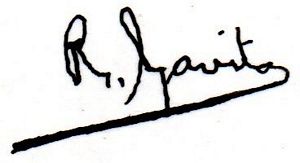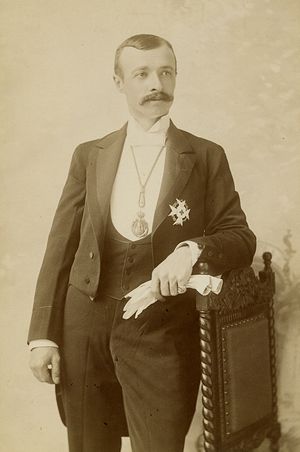Signatories of the Banco Oriental de México
Gerente
|
Juan Enrique Meyer had been manager of the Banco de Zacatecas from 1897 to 1899. He was appoined at the second board meeting on 4 January 1900AGN, SC224 Antiguos Bancos de Emisión, caja 818, libro 1488. He was required to give a surety for $20,000, in a policy provided by the American Surety Company's branch in Mexico City. Meyer handed in his resignation on 9 May 1901AGN, SC224 Antiguos Bancos de Emisión, caja 818, libro 1488 minutes of board 9 May 1901. Manuel Rangel, the cashier of the local branch of the Banco Nacional de México, and H. Evans, the manager of the branch of the Banco de Londres y México were mooted as his replacementEl Tiempo, Año XVIII, Núm. 5291, 19 May 1901. |
 |
|
Manuel Rangel had been the cashier of the Puebla branch of the Banco Nacional de México, and was mentioned as the future manager of the Banco Oriental de México in November 1899El Tiempo, Año XVII, Núm. 4834, 2 November 1899 but he was appointed in late May 1901, after Meyer’s resignationLa Voz de México, 21 May 1901; La Patria de México, Año XXV, Núm. 7,353, 24 May 1901 and started work on 7 JuneEl Popular, 10 June 1901: Periódico Oficial, 21 June 1901. In February 1908 Rangel was also appointed manager of the related bank, the Banco de Descuento EspañolEl Tiempo, Año XXV, Núm. 8194, 15 February 1908. On 5 February 1914 it was discovered that the bank had for several years been the victim of a fraud. Placido Tapia, a book-keeper in the casa comercial of Juan Pérez Acedo and Antonio Duarte, businessmen who had a current account of $70,000, had forged their signatures on cheques and other documents and embezzled $20,000, $12,000 of which he had used to buy a house. When the fraud was discovered, Tapia fled the cityEl Diario, 10 February 1914. Rangel offered to resign and to put his assets at the bank’s disposal but the board did not accept, given his long and efficient serviceEl Independiente, 1 March 1914. |
 |
| Ricardo Serrano was the cashier (cajero) but signed some 4,700 notes in June 1901AGN, SC224 Antiguos Bancos de Emisión, caja 1408, libro 1900 |  |
Interventor
|
F. Cortina He signed notes dated from 1900 to 30 June 1901. |
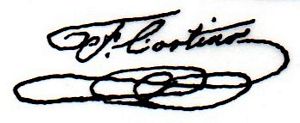 |
|
Ramón Ramírez de Aguilar was appointed Jefe de Hacienda in Oaxaca in 1893 La Voz de México, 21 July 1893 and of Yucatán in July 1895La Patria, 31 July 1895. By March 1900 he was Jefe de Hacienda of Puebla El Tiempo, 18 March 1900 and as such served as an interim interventor. He signed the balance sheet for 30 April 1901 and notes of four values ($5, $10, $20 and $50) dated 1 May 1901. |
 |
|
Manuel González Pavón In 1901 Manuel González Pavón and his wife Julia Martínez del Río (the daughter of the wealthy José Pablo Martínez del Río) bought the hacienda de San Miguel Acocotla for $80,000. His wife inherited the place after González Pavón’s deathArchivo del Registro Agrario del Estado de Puebla, exp. 325, Ejecución “La Mojonera”. He signed the balance sheets from 29 June 1901 onwards and signed notes dated from 1 June 1901 to 1913. He died on 6 January 1913. |
 |
|
[identification needed] This signatures appears on $1,000 notes dated 17 June 1913. The interventor at that time was A. C. Fernández, who took over from M. Rosales in March 1913. |
 |
|
He signed notes in 1914. |
 |
Consejero
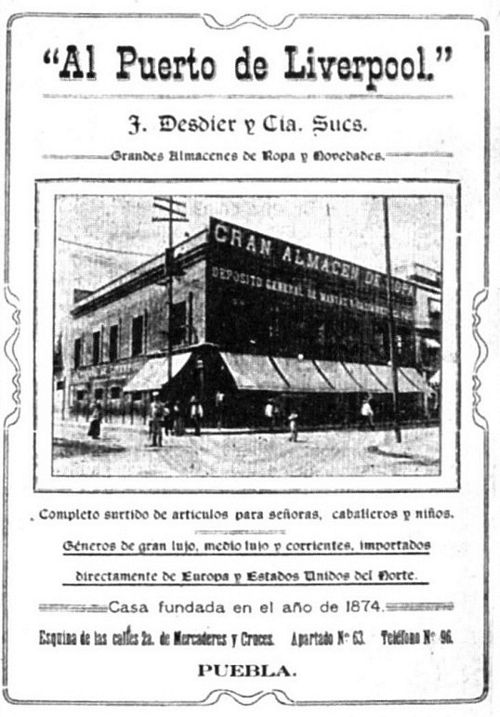
|
José Desdier was a Barcelonnette. He was the owner of the clothing and goods store “Al Puerto de Liverpool” at 2a de Mercaderes 8. He was originally part of the firm of Garcín, Desdier y Sibilot, which in March 1894 became Desdier, Sibilot y Cía.Periódico Oficial, Tomo LVI, Núm. 22, 15 March 1895. Julio Sibilot left and in April 1903 the company became J. Desdier y Compañía”Periódico Oficial, Tomo LXXII, Núm. 31, 7 April 1903. He died in May 1911El Opinión, Tomo XIV, Núm. 2,156, 25 May 1911. |
 |
|
In 1900 Rivero Collada, with a group of fellow Spaniards, founded the Banco Oriental de México, becoming its president in 1902. In 1902 he was also involved in the establishment of the Banco de Oaxaca, which merged with the Banco Oriental in 1909, and was the comisario propietario of this bank from August 1902 through to June 1909. He was also a member of the Junta Directiva of the Banco Central Mexicano, an institution established in Mexico City to protect the interests of the regional banks and to act as a clearing house for the banknotes of the different banks. In 1904 he formed another bank, the Descuento Español, of which he was principal founding shareholder and president of the Consejo de Administración. He was also president of the Consejo de Administración of the Banco Español Refaccionario, created in 1911. He was Spanish vice-consul from 1903 until 1915. At the start of the Revolution Collada’s financial interests and political connections, together with anti-Spanish sentiment, made him a target of the revolutionaries. On 26 April 1911 the workers in his textile factories accused him of using Banco Oriental funds to support the Porfirista candidate for governor, Rafael Isunza, and in August 1911 he was accused of helping Bernardo Reyes in his opposition to Madero. He was again accused of involvement in politics, despite being a Spaniard, and mistreatment of his workers on 6 November 1914 and had to seek the help of the new governor, Francisco Coss, to stop the investigation. With the Banco Oriental closed and about it have its concession cancelled, at the beginning of 1916 Rivero Collada returned to Seville, Spain, where he started new busineses and acquired the title of Conde de la Mesada. After the Revolution he managed to recover some of his properties in Mexico and the Banco Oriental and the Banco Refaccionario restarted operations, though they closed in the 1930s. Rivero Collada died in Seville on 23 November 1927. |
  |
|
Agustín de la Hidalga Vargas was born in Tepapayeca, Izúcar de Matamoros, the son of Vicente de la Hidalga and Nicolasa Vargas, around 1850 and settled in Puebla in 1885. In his will, Agustín mentions that he received as an inheritance from his father the haciendas of San Juan Colón, San Félix Rijo and San Lucas Matlala, located in the southwest of the state of Puebla, with 35,122 hectares of land and waters in the municipalities of Atlixco, Izúcar de Matamoros and Chiautla. Thanks to this, he distinguished himself as a powerful sugar entrepreneur during the Porfiriato, turning the sugar cane into panela, sugar and alcohol in his own mills. He maintained political ties with Mucio M. Martínez, at the time governor of Puebla. Agustín also owned twenty-three urban estates in the city of Puebla, and several warehouses and plots located on land near the station of the Ferrocarril Interoceánico. He bought shares in various corporations, besides the Banco Oriental de México, the Banco Español Refaccionario and the Descuento Español, being a founding member of the Compañía Telefónica de Puebla, the Compañía Cubana de Inversiones “El Guardián”, the Compañía Petrolífera de Puerto Ángel, Oaxaca, the Compañía Minera El Cobre y anexas, from Jungapeo, Michoacán, the Compañía Minera de Etla, Oaxaca, the Compañía Minera San Marcelino of Jalacingo, Veracruz, the Mineral "La Providencia", in Puebla, and the Compañía Industria Cerámica de Cuayuca, among other institutions, thus diversifying his commercial activities. He died in Puebla on 15 June 1911. He was vocal suplente of the Banco de Oaxaca from August 1902 to October 1902. |
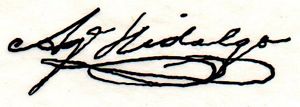 |
| José Villar Parás |  |
|
Alberto de la Fuente Cabrales was born in Quintana, Llanes, Spain in 1861. He married Josefa Sánchez Tapia on 9 May 1900El Amigo de la Verdad, Año XXIX, Tomo II. Núm. 103, 10 May 1900 . He had interests in textiles and agriculture, representing Ramón de ls Fuente and R. de la Fuente y Compañía. |
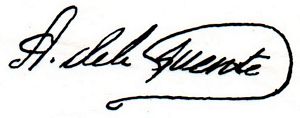 |
|
Angel Solana Alonso was born in 1856 in Bustablado, Santander. He amassed a fortune through investing in textiles in Puebla and Tlaxcala. He first ventured into the industry in 1899 by founding the factory of cotton yarns and fabrics San Luis Apizaquito, very close to Apizaco, Tlaxcala. In 1912 he appears as a member of La Teja S.A., a long-established company that operated the cotton yarn and fabric factory of the same name, located in the state of Puebla. Angel’s investments were not limited to the Puebla-Tlaxcala region , but reached the neighboring state of Oaxaca, where he appeared in 1906, along with his nephew Mateo Solana, as a member of the company A. Solana y Sobrino, owner of a commercial house located in Huajuapan de León. He also owned the hacienda San Diego Apatlahuaya. He was also the third most important shareholder in the Banco Español Refaccionario, with 3,200 shares, behind Manuel Rivero Collada and Manuel Rangel who had 4,000 each. |
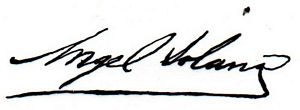 |
| Vicente Gutiérrez Palacios had agricultural properties but above all represented the interests of Alejandro Quijano, who had returned to his native Spain without liquidating his important business in Puebla (the textile factory "El Mayorazgo", with its huge hacienda and its wheat mill) and in Oaxaca (where his company mainly operated the trade of imports and exports and cabotage between Pacific ports). | 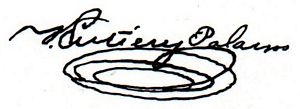 |
|
J. Arechaga [a Santiago Arechaga was a director] |
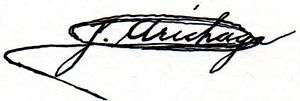 |
|
Santos Letona Rueda was the son of Santos López de Letona y Apoita who came from Bilbao, Vizcaya, Spain and was of the first to invest in textiles, setting up the “La Josefina” factorynamed after his wife Josefa Gómez Rueda y de la Fuente, daughter of the hacendado José Gómez Rueda and sister of Manuel Gómez Rueda y de la Fuente, who was involved in the textiles business. in Zacatelco, Tlaxcala. In 1880 Santos López de Letona established the La América warehouse in Puebla, that originally sold groceries etc. but later sold the cloth made in his own factory. In 1888 with Santiago Aréchaga and José Alvarez Valenciano, he formed “S. Letona y Compañía”, which ran the Zacatelco factory and another, “La Concepción”, as well as holding shares in the Compañía Industrial de Atlixco, owners of the textile factory at Metepec. López de Letona was also a shareholder in the Banco Español Refaccionario. Santos returned to Spain around 1893 but continued to run his businesses in Mexico, first through his son-in-law Santiago Aréchaga, and later though his sons, Santos and Emiliano de Letona y Rueda. |
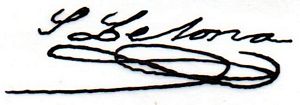  |
| José Mariano Bello y Acedo’s father, José Luis Bello y González, moved from Veracruz to Puebla in 1822 in the company of his friend and partner Francisco Cabrera y Ferrando and established a company called "Bello, Cabrera y Cia." which included real estate businesses, a mill and a textile factory. José Luis invested the large income from his businesses in, among other things, the purchase of works of art. When Juárez confiscated the assets of the clergy, his company acquired several properties. At his death José Luis left 324 paintings that were distributed among his four children. Mariano Bello ceded his inheritance, which had increased significantly, to the state to create in 1944 the "Museo José Luis Bello y González" in his father's house, on the corner of 3a and 3a Poniente. |  |
| Francisco Lozano Z. | 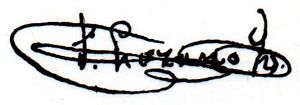 |
|
Jacobo Lucas Grandison, from an important family of Scottish origins, had interests in cotton and mining. In 1902 Grandison organised the Compañia Minera de Etla, S.A.Its consejo de administración was controlled by Grandison, Federico and José Zorrilla Tejada, Francisco Gómez Trápaga, Gildardo Gómez, Guillerrmo Tnnker and Feliciano Hazas. Other shareholders included Juan Antonio del Valle, Luis G. Bellon, Francisco,Enrique and Manuel Zorrilla Tejada, Josefa Tejada viuda de Zorrilla, Luis Bustamante, Juan and José Gómez Trápaga, José Sainz Trápaga Granja, Ignacio Morales y Benítez, Manuel Rivero Collada, Francisco M. Conde, Antonio Quijano y Quijano, Agustín de la Hidalga, Alberto Díaz Ceballos and Miguel Benítez Noriega. Eventually Grandison and the Zorrilla became involved in the oil industry in the state. In October 1905 Grandison organized a company the began drilling for oil around Puerto Angel, Oaxaca(The Mexican Herald, 5 October 1905; The Mexican Herald, 2 November 1905) The Compañia Petrolera de Puerto Ángel, S.A. had 28 shareholders, including Jacobo Lucas Grandison, Constantino Rickards, José, Federico and Enrique Zorrilla Tejada, Maximiliano Reimers, Guillermo Metxueiro, Luis Bustamante, Manuel Rivero Collada, Antonio Quijano y Quijano, Agustín de la Hidalga, Ángel Díaz Rubln y Angel Solana. Its junta de vigilancia was composed of Jacobo L. Grandison, José Zorrilla and Francisco Gómez Trápaga, the manager was Guillermo Trinker and the book-keeper (tenedor de libros) Luis Benitez (El Popular, 8 July 1901). |
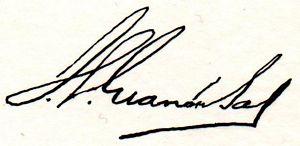 |
|
[identification needed] This signature appears on a small batch of $10, notes, Series N CILXX, dated 3 February 1910. |
 |
Other personages
|
Adrian Reynaud was a Barcelonnette. Reynaud was a shareholder in the Compañía Industrial de Orizaba S.A, Compañía Industrial Veracruzana S.A, Compañía Industrial San Idelfonso, Fábrica textil La perfeccionada, La Colena footwear factory in Tampico, Tamaulipas, and in Puebla in the novelties store of La Ciudad de México (1862), the textile factory El León (1898), the Compañía Industrial de Atlixco (1902), the commercial house Au Bon Marché (1903) and this Banco Oriental de México. The firm Reynaud & Lions included Adrian Reynaud and the brothers Juan Bautista and Honorato, and their nephews, Eugenio, Antonio and Amado LionsThe Lions family, with its textile factories and trade stores in Puebla and Mexico City, as well as its holdings in the Banco de Londres y México and Banco Oriental de México and some business in livestock and agriculture (the Rancho el Palmar in Zongólica, Veracruz), managed to become one of the wealthiest families in the state of Puebla.. |

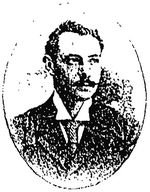 [if right person]
[if right person]